As mentioned in the last article, the early 1970s were blessed with revivals. Remembering what God did fifty years ago, we turn first to the Asbury Revival of 1970. The students of that college experienced revival and testified at other schools until the fire had touched 130 campuses. Some of these were Christian colleges; others were secular schools impacted through Christian campus groups. The story as told by Howard Hanke is glorious!
“God in Our Midst”
by Howard A. Hanke
Tuesday, the third of February, dawned like any other winter day in Wilmore, Kentucky. A cold wind whipped through the tall, barren trees on the campus of Asbury College. No one could have guessed that soon the little school would be caught up in a demonstration of divine love that would have repercussions to the ends of the earth.
Casual chatter occupied the conversation of students as they hurried to the 10 A.M. chapel service. Walking up the steps of the stately Hughes Auditorium one could see chiseled on the cornerstone: FOLLOW PEACE WITH ALL MEN AND HOLINESS WITHOUT WHICH NO MAN SHALL SEE THE LORD. This Scripture verse expressed the aspirations of the college, and gave insight to her heritage. But the admonition was scarcely in the thinking of the nearly 1,000 students as they rushed to get in their assigned seats before the bell.
The program that morning did not follow its customary worship pattern. The dean of the college, who was the scheduled speaker, did not feel impressed to preach. Instead, he felt led to have students participate in a testimony meeting. This practice is not strange to Asbury College where students are encouraged to give voice to their inner faith.
For some time a small group of students had been involved in a vigorous devotional discipline. It included getting up a half hour earlier than usual each morning for prayer, Bible study and to plan specific ministries during the day. Many of these persons had entered into more meaningful experiences with God, and their witness was having an effect upon others in the college. In addition, various groups—large and small—had been meeting at different times to pray for spiritual awakening. All of this had contributed to an air of expectancy on the campus. A few students were even stating prophetically that a great outpouring of the Holy Spirit was imminent.
The dean opened the testimony service by sharing his own experience with God. He then invited others to do the same. Quickly a number of students arose in various areas of the sanctuary. Their testimonies were fervent and reflected deep heart-searching. Clichés were totally absent. Each person seemed intent upon sharing an up-to-date report on what God was doing in his or her life.
One recalcitrant senior shocked the audience by confessing, “I’m not believing that I’m standing here telling you what God has done for me. I’ve wasted my time in college up to now, but Christ has met me and I’m different. Last night the Holy Spirit flooded in and filled my life. Now, for the first time ever, I am excited about being a Christian! I wouldn’t want to go back to the emptiness of yesterday for anything.” Others followed. Everyone sensed that something unusual was happening. God seemed very near.
Sensing the mandate of the moment, near the close of the allotted chapel hour one of the professors slipped to the platform and expressed his feeling that any students who wanted to pray should feel free to come to the altar. There was no pleading or cajoling—just the quiet reminder that the altar was open.
(Perhaps it should be explained that traditionally the altar is where man meets and communes with God. In the college auditorium, as in many churches, it is represented by a long kneeling bench located between the front pews and the platform. The furnishing is a carry-over from the Old Testament altar on which a penitent presented his sacrifice to symbolize a complete dedication of his life to Jehovah. The Christian sees in it now the cross where Christ offered Himself as the perfect sacrifice for our sins. It is only natural, then, for the kneeling rail to become a sacred place of prayer.)
No sooner had the invitation been extended than a mass of students moved forward. The congregation began singing “Just As I Am.” There was not room for all who wanted to pray at the altar. Many had to kneel in the front seats of the auditorium. Their prayers were mingled with heartfelt contrition and outbursts of joy. It was evident that God was moving upon His people in power. The presence of the Lord was so real that all other interests seemed unimportant. The bell sounded for classes to begin, but went unheeded.
At the time of this first invitation to pray there were still a number of students standing, ready to testify. As scores of students flocked forward to pray, these young people made their way to the edge of the platform, hoping yet to be able to give their testimony. After a short wait one girl strode toward the podium and asked the professor in charge if she could please say something. He stepped aside. As she finished, a second student stepped forward.
Those who had come to the altar—after a time of prayer—rose, joining those on the platform and with tears made confessions. These acknowledgments ranged from cheating and theft to having animosity, prejudice and jealousy. Some made their way to individuals in the congregation to ask forgiveness and to make restitution. Old enmities were melted with the fervent love of God. Frequently these encounters of reconciliation resulted in experiences of joy and gladness. Some shook hands while others embraced. Often having obtained a new relationship with God, students would raise their fingers in the peace symbol, a V for victory sign.
A long line of students began to form as each waited his turn to tell what God had done in his heart. Students in all classes from freshmen to seniors poured out their souls, asking forgiveness and exhorting others to heed the call of God. As the confessions were made, other students streamed to the front, filling the altar and front seats.
This intense divine manifestation continued into the noon hour. One faculty member reported that he went to the dining hall for a scheduled divisional meeting. When he found only a few diners in the place ordinarily filled, he came back to the chapel, where people were more concerned with the divine bread of heaven than food for the body.
Occasionally students and faculty with special vocal talents were led by the Spirit to come to the microphone to sing their testimony. Other times someone in the congregation might lift a familiar hymn which would soon be caught up by all. When the tide was running high, the singing congregation often would witness to their faith by raising their arms heavenward. One of the most beautiful of the musical moments was when members of the Women’s Glee Club stood in their places around the auditorium and sang with fervor “When I Survey the Wondrous Cross.”
The service continued on into the afternoon as announcement was made that classes were suspended for the rest of the day. A sweet gentle current of the Holy Spirit circulated within the congregation giving a feeling of warmth around the heart. Students continued to testify and pray with no abatement of earnestness. Toward the supper hour some began to leave, but the building began to fill again as the marathon service entered into the evening. At times nearly every seat in the 1,550 capacity auditorium was occupied. Some people were standing around the walls. Others were looking on from the doorways, sometimes virtually blocking the exits.
In the sanctuary there was continual movement to and from the altar. At times the whole front of the auditorium was crowded with people on their knees; some praying, some giving counsel, some just rejoicing in the Lord. All the while on the platform there was the unceasing stream of people publicly declaring the wonderful works of God.
The classrooms in the basement served as meeting places for special prayer groups or afforded a quiet Bethel for someone to meditate upon heavenly things. It was common to see students seated or kneeling together—two by two with an open Bible—praying or discussing the things of God. Not infrequently all the rooms were filled and persons were to be seen praying in the lower assembly hall. They knelt on the floor by chairs and benches as if they were there alone. No one seemed to be bothered when people passed by. The spirit of unity was so real that everyone felt a common interest in and sympathy for the spiritual needs of others.
During the first day some of the 450 seminary students were deeply moved by the divine visitation of Asbury College and began to yearn for the same spiritual renewal on their campus across the street. An all-night prayer meeting was quickly called. This vigil intensified the burden for revival that some had felt for many months.
The next morning at the regular seminary chapel service it happened. As at the college, this program, too, was unusual in that no formal preaching was planned. Rather, the time was scheduled as a hymn-sing. When one student stood up to relate how the revival had affected his life, many under the power of the Spirit began to move to the altar. There followed the now familiar pattern of hearts melting in the refining fire of God’s presence.
Some of the students and faculty came to the pulpit and openly acknowledged faults and spiritual needs. Resentments, hidden jealousies, lustful desires, worldly attitudes of all kinds were brought out into the open. A sin often confessed related to the indifferent way the holy things of God had been treated. As one graduate student expressed it, “I’ve become nonchalant about this whole business of being a Christian and of witnessing to others.” Asking for the prayers of his associates, he fell at the altar to seek forgiveness and to make a new and deeper surrender of his life.
The service continued on into the afternoon. Some classes tried to meet, but many students remained in the chapel where the divine presence was still so much in evidence. By the next day all classes were officially cancelled for the rest of the week.
The tone of the seminary revival was generally more subdued than at the college, but no less genuine. Testimonies of the students were touched with a tenderness and a love which could only come from men and women who had been with Christ.
Most of the men in the seminary are married, and it was inspiring to note how many of them brought their wives into the services. It was a common sight to see couples holding hands and walking down the aisle to kneel at the altar together. After renewing their love for God, they would rise with tear-dimmed eyes and embrace, evidencing a renewal of their love for each other.
Over the weekend, the seminary phase of the revival merged with the college where the main activities continued around the clock without any letup. High peaks in attendance would come in the evening hours when the main sanctuary was crowded. Even at 2:30 A.M. there might still be 300 people in the chapel at prayer. Their numbers would dwindle to less than a hundred before sunrise. Then after breakfast the building would begin to fill again.
Day after day the campus community was absorbed in only one thing: getting right with God and seeking His will. Divine prerogatives transcended all other considerations. Being present at the services seemed to be the most important thing at the moment. Radio, TV, parties, ball games, and other activities did not hold any appeal. One person was heard to say, “I have gone on a complete radio and TV fast.” Time did not seem to matter. Many students were so engrossed in the Spirit that they stayed in the chapel a better part of the whole week.
During the services people were free to do their own thing as the Spirit led. A few faculty members were always on hand to help direct witnesses to the microphone and to make announcements. But they did not try to manipulate the services according to any prescribed schedule. The amazing thing is that in the face of such liberty there was no disorder. A few times something may have been said in a testimony that was out of place, but invariably when this happened, the Holy Spirit quickly got the situation under control.
Occasionally the pattern of witnessing was interrupted by special seasons of prayer in response to the many requests coming in. Telegrams, letters and phone calls contained urgent appeals for prayer from all over the United States and Canada. Reports of the revival outreach in other communities also were shared from time to time. When the news of some new victory was heard, people would break forth in shouts of praise while the congregation would pick up the strains of the organ and with uplifted hands, would join in singing “To God be the Glory.”
Hundreds of visitors were attracted to the campus through news reports of the revival. Some came from as far away as California, Florida and Canada. Many of these strangers were greatly stirred by the Holy Spirit and came to the platform to testify of their own renewal. One person said he heard about the revival over his car radio, and his curiosity led him to drive by the campus. He was so stricken by the power of God that he himself found a wonderful Christian experience at the altar. A couple intended to stop for a short visit and stayed a week. Another car full of people were on their way to spend a vacation in West Virginia with relatives, but they were so overcome with the revival spirit that they spent all their vacation at Asbury.
Many townspeople joined in the revival, especially the teenagers. Some youth who previously had little interest in religion were converted and began to talk to their friends about Christ. One of these witnessing youth was awakened from a deep sleep at 3 A.M. one morning. Towering over him was a bearded, shaggy-haired hippy friend who said, “I’m ready to go to the altar.” The two boys went to Hughes Auditorium to pray, and before long the friend was testifying of the saving grace of Jesus.
On Sunday, several of the local churches dismissed their regular services to encourage everyone to go to the revival. There was standing room only as more than 1,600 persons jammed the building. One of the most moving hours of the week came that morning when one of the local pastors took his place at the pulpit and poured out his agonized soul and confessed his shortcomings. He was followed by his wife, who confessed at length her unhappy state of mind about being a pastor’s wife in Wilmore. Both testified to a renewal of grace and infilling of divine love. The pastor called several people by name and made his peace with them. Following this demonstration, the president of Asbury College suggested that there should be more than one hundred adults among the faculty, staff and town community who should come to the altar and make things right with God and man. Immediately a mass of people moved forward, filling the front section of the auditorium and front aisles. Many prayed and wept with deep emotion and afterward came to the platform to make apology to those whom they had wronged and against whom they had resentment. The spiritual and social healing which occurred on that Sunday morning has solved more problems than any other event in the town for many years.
The spontaneous revival continued into the chapel period on Tuesday, February 10. Many were still in line to give their witnesses. Some had appeared before the congregation several times, giving progress reports on their own spiritual development or reporting on how God had worked through their witness.
The administration decided to resume classes at the end of the period. However, the auditorium was kept open for prayer and agreement was made to have a nightly meeting. Students continued to come and go through the day and into the night. Shortly before 3 A.M. on Wednesday morning the last student left the sanctuary. For 185 hours—without any interruption—the services had continued! During all this time there was no pressure, no scheduled meetings, no paid advertising, no offering, no invocation, no prelude or postlude, and no benediction.
And no one tried to compile any statistics. It was felt that this would be out of keeping with the spirit of the revival. But most of the students on the campus of the college and seminary knelt at the altar, and there were thousands of other persons who made a similar dedication. The whole spiritual tone of the campus was completely changed.
The lights in Hughes Auditorium still have not been turned out. Even now, months later, a few people gather each evening to pray, witness, and rejoice together. Often these meetings last into the midnight hours, with visitors not infrequently being helped on to God. Also during most hours of the day someone may still be seen entering the chapel. They kneel to pray for a few minutes, then leave. Others just sit and stare at the altar so rife with precious memories. If one looks closely, tears may be seen coursing down their cheeks.
Perhaps those tears express more eloquently than words what has happened. There is no human vocabulary that can capture the full dimension of one divine moment. In some ways, it seems almost like a dream—yet it happened. We saw it with our eyes. In a way impossible to describe, God was in our midst. Those of us who were there can never look upon the things of the world quite the same.
▪ Used by permission. ▪

John Van Gelderen
Post Author

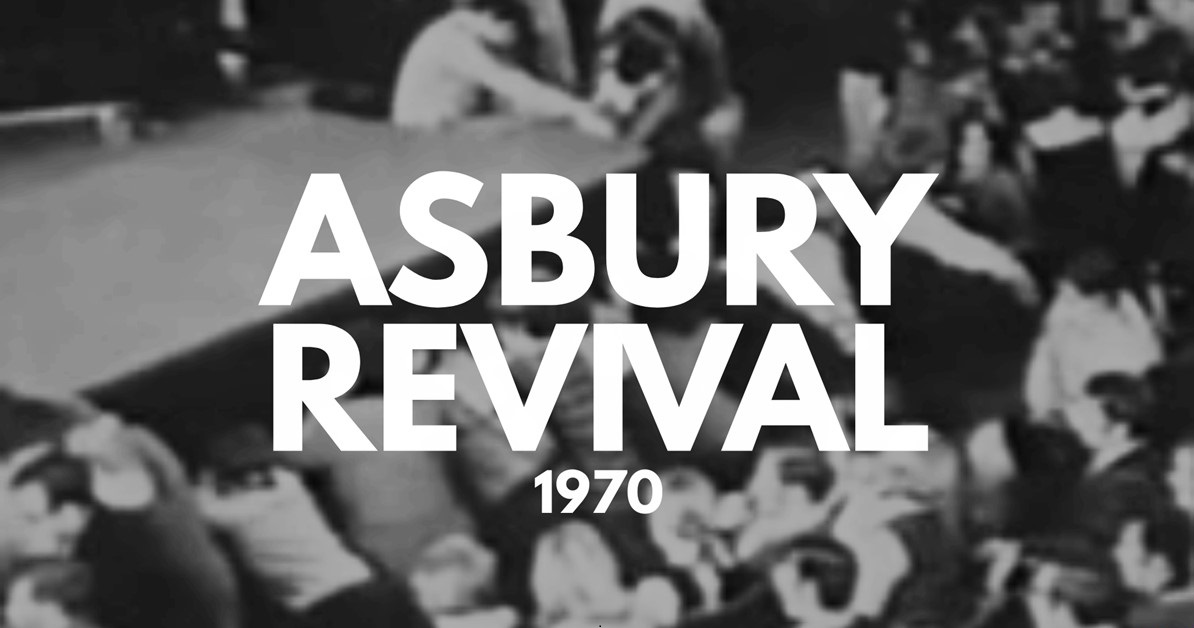
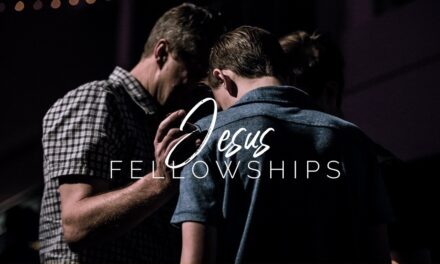

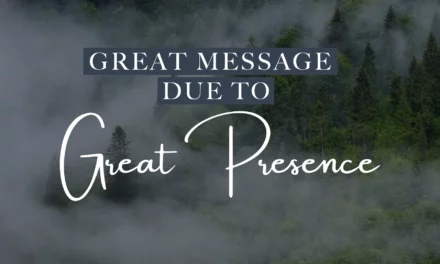
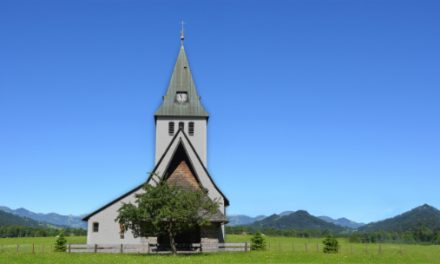
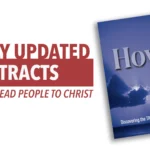



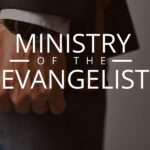
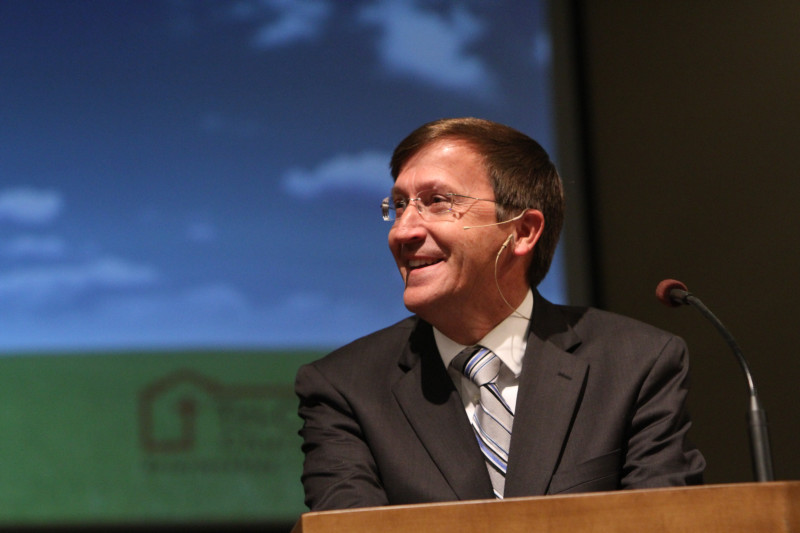
What a great article! I have read many definitions of revival but was impressed while reading this article that revival is nothing less than ordered chaos. Roy Hession said revival is not when the top blows off but when the bottom falls out. Everything in life – schedules, events, the clock, leisure – everything is interrupted and the Lord takes his place in his manifest presence. My heart yearns and prays, “Oh, Lord! do it again!”
Amen!
Great, faith-building story. God can and wants to do it again.
Absolutely!